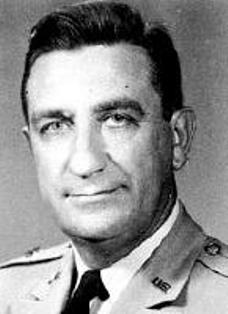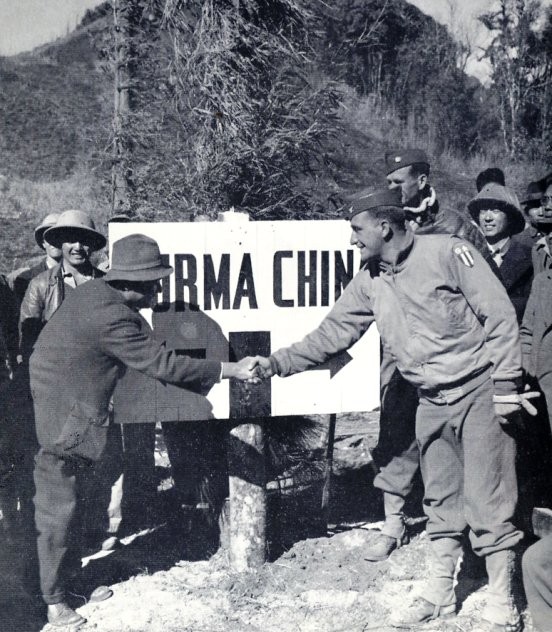

Retired Army General Robert F. Seedlock, who led the arduous construction of the Burma Road that broke the Japanese blockade of China during World War II, died May 5, 2004, at Arlington, Virginia, of heart disease. He was 91.
As a Colonel, Seedlock oversaw a force of 1,000 U.S. engineers and other troops, plus 20,000 Chinese laborers, as they built more than 600 miles of road across the Himalayas between China and Burma, often in extreme weather and under threat of attack.
General Lewis A. Pick, who supervised the road’s overall construction, called its opening in January 1945 “the toughest job ever given to U.S. Army engineers in wartime.”
Donovan Webster, author of “The Burma Road,” said Seedlock found part of the original route used by Marco Polo in his travels, shaving about 200 miles off the supply line. Seedlock “made a great contribution,” Webster said.
In 1942, Japanese forces had taken control of northern Burma and had destroyed sections of a highway that was the sole overland route from India to China. After allied forces recaptured parts of Burma in 1944, Seedlock was given command of the Burma Road Engineers. His mission: Build the eastern half of the highway, the Burma Road.
Seedlock’s job included rebuilding highway and constructing new roads and bridges.
After the war, Seedlock remained in China, where he was part of General George C. Marshall’s failed mission to mediate a settlement to the civil war that led to the communist takeover of the country.
At the end of his Army career, Seedlock took command of Fort Belvoir in northern Virginia in 1966 and led an effort to desegregate off-base housing.
Working through private channels, Seedlock told landlords that if they refused to rent to black soldiers, they would be unable to rent to any soldiers. For his efforts, he received a commendation from Defense Secretary Robert S. McNamara.
He retired from the Army in 1968 and went on to manage major engineering projects in the private sector, including construction of rapid-transit systems in Pittsburgh and Atlanta and the Jiddah airport in Saudi Arabia.
He held a master’s degree in civil engineering from the Massachusetts Institute of Technology.
Survivors include two sons, two daughters, six grandchildren and four great-grandchildren.
General Robert Seedlock Dies; Led Burma Road Project
By Matt Schudel
Courtesy of The Washington Post
Friday, May 21, 2004
Robert Francis Seedlock, 91, an Army General who led thousands of engineers and laborers in the epic building of the Burma Road across the Himalayas during World War II, died May 5, 2004, of heart disease at his home in Arlington, Virginia.
In the 1960s, as commander of Fort Belvoir, he was instrumental in bringing an end to segregated off-base housing for troops in Northern Virginia. After 31 years in uniform, he retired from the Army in 1968 with the rank of Major General and became an engineer on large-scale transportation projects, including the world’s biggest airport at the time, in Saudi Arabia.
Yet it was the Burma Road that was the high point of General Seedlock’s Army career. His achievement in building the eastern half of the supply route, linking China and India along an ancient trail traveled by Marco Polo, has been largely obscured by time and proved, ultimately, to be of little military use. The opening of the Burma Road, accomplished under extreme conditions of terrain, weather and threat of attack, was called “the toughest job ever given to U.S. Army engineers in wartime” by Gen. Lewis A. Pick, who supervised its overall construction.
In 1942, Japanese forces had taken control of northern Burma and had destroyed sections of a highway that was the sole overland route from India to China. After Allied forces had recaptured parts of Burma in 1944, General Seedlock, then a Colonel, was given command of the Burma Road Engineers. His mission was to build the eastern half of the highway, the Burma Road. (The western section was called the Ledo Road, after its terminus in Ledo, India; the term “Burma Road” has since been applied to the entire highway.)
General Seedlock faced considerable risk just to survey the land.
“He went through jungle that was Japanese-controlled in a gas truck with a couple of other guys,” said Donovan Webster, author of “The Burma Road,” a recent history of the war in China, Burma and India. “It was incredibly brave.”
General Seedlock directed 1,000 U.S. engineers and other troops, along with 20,000 Chinese laborers, as they built the highway. Their course took them through thick rain forests and across treacherous 10,000-foot mountain passes, sometimes under Japanese artillery fire.
In only four months, General Seedlock’s crews rebuilt about 535 miles of highway and constructed 85 miles of new road and bridges from Kunming, China, to Myitkyina, Burma. When the Burma Road opened on January 20, 1945, it ended the Japanese blockade of China.
“He found the Marco Polo route, which cut about 200 miles off the trip from India to China,” Webster said. “He made a great contribution.”
After the war, General Seedlock remained in China, where he was part of General George C. Marshall’s failed mission to mediate a settlement to the civil war that led to the Communist takeover of the country. From 1949 to 1954, he was stationed at the Pentagon as aide-de-camp to General J. Lawton Collins, the Army Chief of Staff.
In the 1950s and 1960s, General Seedlock held various postings with the Army Corps of Engineers and the regular Army. He was promoted to Major General, his highest rank, in 1962. The following year, he helped negotiate the release of two U.S. helicopter pilots captured in North Korea.
In 1966, he took command of Fort Belvoir, near Alexandria. Even though the Army had been integrated since the 1950s, housing near the base was not. General Seedlock let it be known, through private channels, that if landlords would not allow African American soldiers in their apartments, no soldiers would live in them. For this quiet but decisive act, the general received a personal commendation from Secretary of Defense Robert S. McNamara. Among his military honors, he received the Distinguished Service Medal, two awards of the Legion of Merit and several decorations from China and France.
After retiring from the Army in 1968, General Seedlock held a variety of high-level engineering positions. He managed projects to build rapid-transit systems in Pittsburgh and Atlanta and, from 1977 to 1981, supervised construction of Jeddah International Airport (now King Abdul Aziz Airport) in Saudi Arabia. In the early 1980s, while working for the Ralph M. Parsons Co., he was in charge of rebuilding hundreds of miles of railroad tracks in Amtrak’s northeastern corridor.
General Seedlock was born February 6, 1913, in Newark and spent most of his childhood in Cleveland, where he graduated from Cathedral Latin School. After two years at the Case School of Applied Science (now Case Western Reserve University), he won an appointment to the U.S. Military Academy, from which he graduated in 1937. He received a master’s degree in civil engineering from the Massachusetts Institute of Technology in 1940.
He married Hortense Norton in 1937.
A skilled musician, he was a member of the West Point orchestra and continued to play the violin throughout his life. In China in the late 1940s, he and his wife, a pianist, organized a chamber group.
General Seedlock never lost the firm, no-nonsense bearing of a soldier. He rose each morning before 5 and swam every day for exercise, until a week before his death.
In retirement, he lived in Florida and in his wife’s home town of Savannah, Georgia. After she died in 2000, he moved to Arlington.
Survivors include his four children, retired Army Colonel Robert F. Seedlock Jr. of Brentwood, Tennessee, Elizabeth Morrisette of Pensacola, Florida, Walter N. Seedlock of Fairfax and Mary Seedlock of Tucker, Georgia; a sister, Helen Sexton of Charlottesville; six grandchildren; and four great-grandchildren.
Two years ago, historian Webster visited the Burma Road and found parts of it overgrown and in disrepair. But it was still there, six decades later, just where General Seedlock built it.
SEEDLOCK, ROBERT F
- MG US ARMY
- VETERAN SERVICE DATES: 01/01/1940 – 02/01/1968
- DATE OF BIRTH: 02/06/1913
- DATE OF DEATH: 05/05/2004
- DATE OF INTERMENT: 07/02/2004
- BURIED AT: SECTION 8 SITE 505-B
ARLINGTON NATIONAL CEMETERY
- DATE OF BIRTH: 09/23/1918
- DATE OF DEATH: 08/30/2000
- DATE OF INTERMENT: 09/08/2000
- BURIED AT: SECTION 8 SITE 505-B
ARLINGTON NATIONAL CEMETERY - WIFE OF SEEDLOCK, ROBERT F
- MG US ARMY
Michael Robert Patterson was born in Arlington and is the son of a former officer of the US Army. So it was no wonder that sooner or later his interests drew him to American history and especially to American military history. Many of his articles can be found on renowned portals like the New York Times, Washingtonpost or Wikipedia.
Reviewed by: Michael Howard

